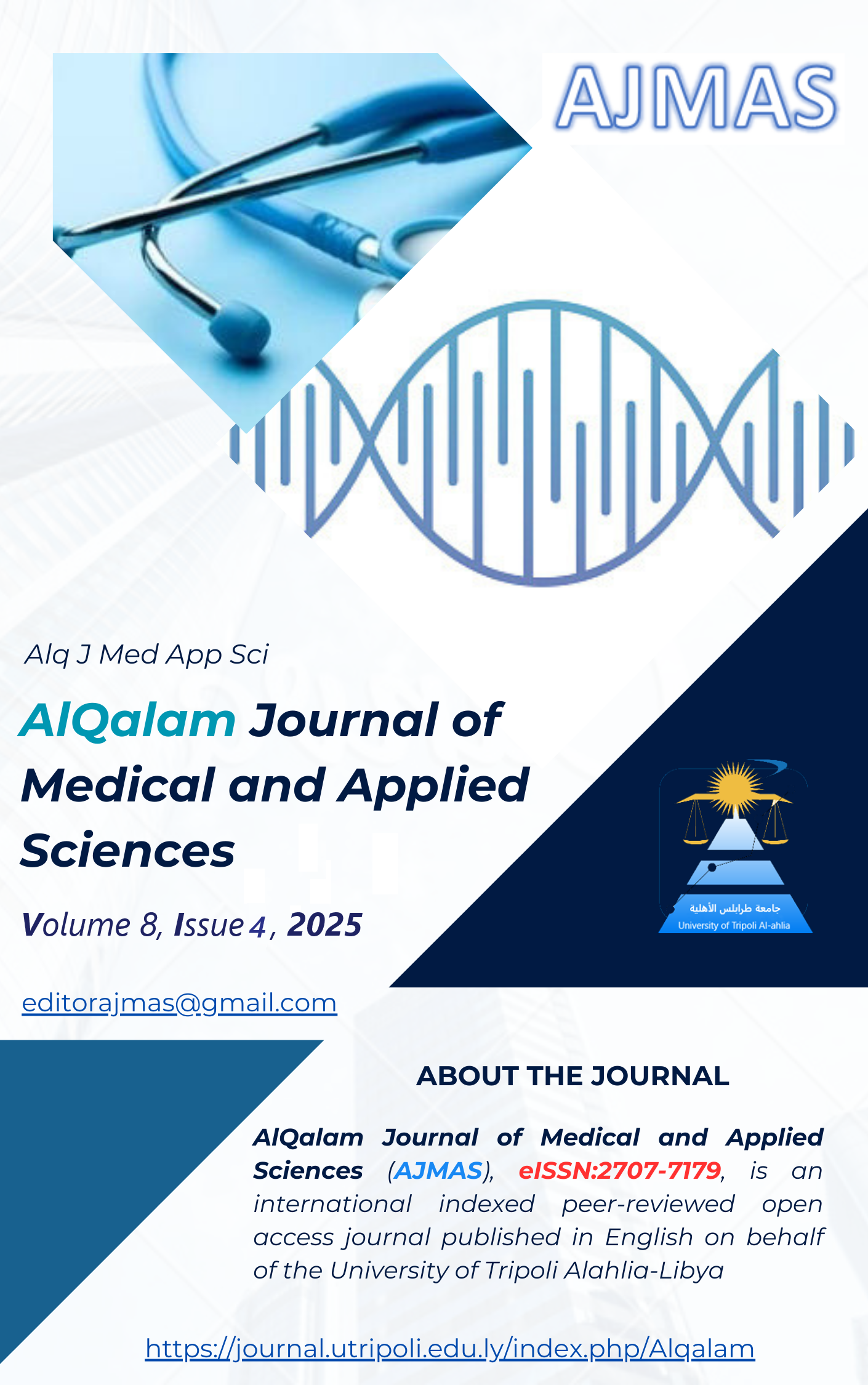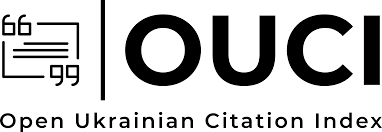Breast Cancer Molecular Subtypes in Libyan Women: Incidence and Prognostic Value of Securin and Separase
DOI:
https://doi.org/10.54361/ajmas.258408Keywords:
Breast cancer, Molecular subtypes, Libyan women, Securin, Separase, Prognosis, Survival.Abstract
Breast cancer exhibits molecular heterogeneity, which influences prognosis and treatment response. In Libyan women, the distribution of molecular subtypes and the prognostic significance of proliferation-associated biomarkers such as Securin and Separase remain underexplored. This study aimed to evaluate the incidence of molecular subtypes of breast cancer and assess the prognostic value of Securin and Separase expression. A retrospective analysis was conducted on 162 Libyan female breast cancer patients. Clinicopathological features, demographics, and treatment data were collected. Molecular subtypes were classified using immunohistochemistry and in situ hybridization surrogates. Expression levels of Securin and Separase were assessed in tumor specimens, and associations with clinical outcomes and survival were analyzed using Kaplan–Meier survival curves and statistical correlation tests. The cohort predominantly consisted of premenopausal women under 50 years, with tumors ranging from 2 to 5 cm. Invasive lobular carcinoma was less common, and lymph node involvement was widespread. Molecular subtype distribution was as follows: Luminal A (49%), Luminal B (27%), triple-negative (15%), and HER2-enriched (9%). Hormone receptor-positive tumors were most frequent, suggesting potential responsiveness to endocrine therapy. Survival analysis demonstrated that Luminal A tumors had the highest 5-year survival, followed by Luminal B, whereas triple-negative and HER2-enriched subtypes had poorer outcomes. High cytoplasmic expression of Securin and Separase correlated with reduced survival, whereas nuclear expression showed variable trends. Securin and Separase expression was significantly associated with tumor stage, metastasis, and larger tumor size, but not with age, family history, tumor grade, or molecular subtype. These findings indicate that molecular subtyping in Libyan women aligns with global trends, with Luminal subtypes being predominant. The study highlights the potential of Securin and Separase as adverse prognostic biomarkers linked to tumor progression rather than demographic or subtype characteristics. The poorer outcomes of triple-negative and HER2-enriched tumors underscore the need for tailored therapeutic strategies. Molecular classification and proliferation biomarker assessment provide valuable prognostic insights in Libyan breast cancer patients. Evaluating Securin and Separase expression may improve risk stratification and guide personalized treatment approaches. Further studies are warranted to validate these biomarkers in larger cohorts.
Downloads
Published
How to Cite
Issue
Section
License
Copyright (c) 2025 Naziha Mansuri, Hussein Hashimi, Markus Matilainen, Adam Alzgheid, Mohamed Alsagher, Abdulbaset Buhmeida, J. M. Jbireal, Pauliina Kronqvist

This work is licensed under a Creative Commons Attribution 4.0 International License.














